Can You Dig It? An Archaeology Student's Adventures in Cyprus

Bethany Montague spent six weeks excavating an archaeological site in Cyprus.
Bethany Montague
Graduation Year
2018
Program
- Art & Archaeology, Archaeology Concentration (B.A.)
Department
- Art & Archaeology
Degree
Art and Archaeology
By Bethany Montague '18
Adventures of an Idalioniate: Week One
One week down, five to go. My first thoughts on Cyprus: So. Very. Hot. While the island is gorgeous, the heat is often sometimes unbearable. On my very first day here it was already 100 degrees. Despite that, though, I am in love with Cyprus, and my dig site.
My camp site is another story though. We are living in army tents and sleeping in army cots. While this might not sound bad, with the Cyprus heat, it is terrible. Thankfully we have fans and lots of water. If we’re lucky, there will be a strong breeze which brings cool air into the tents.
I am working at the ancient city of Idalion, which has been around since the 13th century BCE. Where I am working specifically is a Roman building of which we don’t know the function. While there are several theories, nothing has been declared yet. The site is just North East of the ancient administration building of Idalion that tourists come to see, and covers a large area. Work on the site began Monday, June 26. We start work in the field from 6 to 11 a.m., take a siesta from 11:30 a.m. to 4 p.m., and then return to the field from 4 to 7 p.m. The first day, along with the next four days, was spent weeding the trenches and cleaning up the site so that we could actually dig. By Thursday afternoon we started actually breaking ground. Along with working on site, I and the two other students went on walking lectures with the director of the field school, Professor Pamela Gaber, who started working at Idalion in the 1970s. She walked us through the city of Dali, which is where we are living, and showed us where the ancient city walls would have stood. We also climbed several mountains to follow the wall. She gave us the whole history of the site, both ancient and recent.
While we usually have Friday and Saturday off, this first week we worked Friday (since we started on Monday instead of Sunday), and Saturday was spent in Nicosia, the capital of Cyprus. We traveled to the city to attend the Cyprus American Archaeological Research Institute (CAARI) meeting and listen to the presentations on archaeological sites across Cyprus. It was super fascinating to know that all these amazing digs were on across this tiny island. After the conference, I wandered through the capital with two other girls, Tenninger and Emily, and went to a lot of tourist and local shops. We also crossed over to North Cyprus, which is owned by Turkey. There, we found a really neat market place where we all bought matching pants. We also visited the mosque, and were there when the Call to Prayer happened. It was an amazing feeling and we all got chills. We were lucky, and Dr. Gaber gave us Sunday off. Tenninger, Emily, and I used the day to go to MacKenzie Beach in Larnaca. We spent over five hours at the beach, soaking up sun and enjoying the water. While this has only been week one, I am already in love with this place. Despite the extreme heat and humidity, Cyprus has its charm and beauty. I can’t wait to see what the next five weeks hold for me.
Adventures of an Idalioniate: Week Two
Just when I thought that it couldn’t get any hotter here, the island had to prove me wrong. This past week, it was at least 130 degrees in the sun every day, and 115 in the shade. Because of this we started going out into the field from 5:30 a.m. to noon, and then spent the rest of the evening at base. It wasn’t until Thursday that the weather calmed down.
In the field, I worked to smash a baulk between two trenches. At the start of the week it was roughly 5.5 feet tall, and now it is only about 3 feet tall.This coming week we will work to completely take the whole baulk down. Inside the baulk was a lot of pottery, and even part of a wall. We hope to uncover the rest of the wall as we take down the dirt.
A tool we use constantly is our total station, lovingly named Milton. I have experience with this machine thanks to Dr. Ross, so I often help set it up. When we stayed at base in the afternoon, we washed pottery and did paper work. It was really cool to see all the pottery from everyone else’s trench, and even see what I found once it was clean. A lot of the pottery we are finding is Roman, but sometimes there are earlier pottery sherds. As for paperwork, I’m given the task of drawing the top plan for our baulk. Instead of having to completely redraw the whole top plan, we have a light table so that we can easily trace the plan.
Friday was a field trip day. We went back to Nicosia, but instead of touring the city, we visited the Cyprus Museum. Dr. Gaber walked us through and gave us a small lecture to teach us about the artifacts and the evolution of Cypriot art and pottery. There were several pieces from Idalion, including the head of a statue of a woman. We also visited the ancient city of Kition. The site was used as a temple in the 13th and 12th centuries BCE until it was abandoned. In the 9th century BCE the Phoenicians came and repurposed the temple for their own goddess. These Phoenicians later attacked Idalion, once unsuccessfully, and then a second time in 450 BCE where they overtook the city.
Saturday night we had a Meze dinner to send off Taylor and Dylan who had to leave to go back to their jobs in the states. The dinner was made up of at least 10 small dishes of various meats, vegetables, breads and other foods. There was a constant flow of new food coming in, and it was all amazing. I think my favorite was the rabbit and the tzatziki sauce. I can hardly believe that I’ve been here for only two weeks. It seems like so much longer, but time also seems to be moving so quickly. I feel like if I blink, my six weeks here will be up and I’ll be on my plane back home.
Adventures of an Idalioniate: Week Three
One would think that digging floors would be fun. One would be wrong. I spent the majority of my work this week removing floors and subfloors from my baulk. It is a very slow, tedious, repetitious process. When you first find the floor, you have to sweep, take pictures, and elevations. After that you can excavate the floor, but once it is gone, you have to repeat the same process with the subfloor. Once you remove the subfloor, you must repeat the process again. If you’re lucky, there won’t be any more floors, but if you’re me, you’ll have floors on floors on floors.
One fun thing that happened during the work week though was pottery reading. Every day we have several pottery buckets that get washed and then bagged. For pottery reading, we divide up long tables to lay out the pottery according to each bag. Dr. Gaber comes and reads the pottery, describing what type of pottery it is, what part of a vessel it would be, and what time period it came from. It was really neat to look at all the pottery I had found laid out together and to finally know from what period they came from.
On Friday we went on a field trip again. We drove to the western side of the island to the site of Prastio-Mesorotsos and received a tour from the head of the site, Andrew McCarthy. This site is in the mountains and has levels of occupation from the Pre-Pottery Neolithic Period (12thc. BCE) to the 14thc. CE. The area was occupied for thousands of years and constantly built upon. One of the most fascinating finds at the site is a giant stone oven which McCarthy and his team recreated using experimental archaeology. For the past two years they have performed massive cookouts for the occupants of modern day Prastio with great success.
After Prastio-Mesorotsos we went to the city of Kouklia, but took a small detour before lunch. We went to the Kouklia Snake Farm, which is a small area in a man’s backyard where he keeps snakes and other reptiles he has rescued. While there we saw the famous Cyprus viper, which is the same color as the dirt and very deadly. Whenever we discover a hole on site we always get a rebar and hit inside and around the hole to scare out any creatures which might be hiding, and it’s always a fear that a pit viper will come out. Along with the scary snakes, there was also a very sweet, small snake called a European Cat Snake, which I was able to hold.
After lunch, we visited the historical site of Kouklia, also known as Palaipafos (‘old Pafos’ in Greek). The site was once a city-kingdom, but also a sanctuary to Aphrodite. Found at the site was a Baetyl, which is a large rock which represents the aniconic goddess, the Wannasa, and would have been the object of worship. While we were at the site, we met a small black kitten, who quickly attached himself to me after I cuddled him and became my shadow the whole time we were at the site.
To finish off the field trip we went to Aphrodite’s Beach, which is supposed to be the birthplace of the famous goddess. The beach is gorgeous, but a challenge to walk on, since there is no sand, only rocks. The water, though, was stunning. It was crystal clear and a brilliant blue. I walked along the water’s edge and collected stones for about half an hour.
After the beach, my day was far from over. I took a trip with some of the people from the dig up to a house in the mountains. The owner is a friend of the dig and helped supply us with our tents, cots, and various other supplies. In the evening, he took us into the village of Pissouri for dinner and we got to watch traditional Cypriot Dancing, which involved a man having cups, and then jugs, stacked on his head as he danced. Tenninger was pulled up and successfully placed a cup on his head! More and more each day I fall in love with this island and my site. While the work may be hard and the weather almost unbearable, it is all worth it in the end.
Adventures of an Idalioniate: Week Four
This week was possibly the most exciting week of my archaeological career. While working on the baulk with Becca, we uncovered a dog skull, which turned out to be a whole dog skeleton. Unfortunately, we didn’t realize it was a full dog until we removed the skull, but nonetheless the whole experience was very exciting. It has always been a dream of mine to excavate a skeleton and Becca was more than happy to let me work on the dog. It was a very slow, tedious project, but worth it. I had to use dental picks to remove dirt carefully around the skeleton, and then use small paintbrushes to sweep up the dirt.
I also got to work in a cistern pit this week. The pit is completely filled with dirt, and it was our goal to empty, which was quite a lofty goal. I had to hang upside down in the pit, which was a workout to say the least. Andrew could fit in the pit after about a day of digging, but by the end of the week, I was able to comfortably sit in the pit and work, but we weren’t even half through the fill. Inside the fill we found various pot sherds, and some frogs! They were living in the soft, wet soil, and had even laid eggs in the fill. We removed and relocated them to a safer space.
On Friday, for our field trip, we visited the sites of Khirokitia, Kourion, and Amathus. Khirokitia is a Neolithic city made up of round houses on a hill. While there are no more standing houses, Dr Alain Le Brun, who has worked on the site since 1976, made several reconstructions of the houses to give people a better idea of what they would have looked like. While the trip was quite a hike, it was worth it since Dr. Le Brun took us over some to the fences to show us parts of the site that tourists don’t get to see.
Our next stop was the Roman site of Kourion, built near the southwestern coast of the island. At Kourion there are beautiful mosaics in a bathhouse, along with a theatre, forum, and nymphaeum. After Dr. Gaber talked us through part of the site, she let us roam free. We proceeded to run through the site, climbing on things and investigating everything. Columns are one of my favorite architectural pieces, so of course when I saw a column capital on the ground I took the opportunity to take a photo. I also discovered that I am much taller than the average Roman since I hit my head on a Roman doorway.
The final site of Amathus was a city on top of a hill that was a cult sanctuary of Aphrodite. There is a possible palace about halfway up the hill, and on the top there is a city surrounded by walls which ran down the hill. From the top you could see the ruins of a Roman port under the water. At the top there is a reconstruction of one of the large stone vases that was found at the site. There is also a sacred burial on the side of the cliff face for a heroine, Ariadne, which seems to have been a pilgrimage site. At the base of the hill there is an agora with tall columns. I, of course, climbed the walls and columns where I could. We ended the field trip as we always do, with a trip to the beach. We went to Governor’s Beach, which has white cliffs and black sand. The water was cold, but felt good after a day of hiking up and down hills. It’s hard to believe that I only have two weeks left. While I may constantly be exhausted, sweaty, and covered in dirt, this is an experience that I don’t want to end.
Adventures of an Idalioniate: Week Five
This week was our final week of digging. It was a fun week, but also a sad one. I constantly changed trenches this week as we scrambled to finish all of our digging projects. I started the week by finishing the dog skeleton, and then moved back to cistern. Connor and I worked together to try and get out as much dirt as possible, but we still couldn’t get half way through the fill. We were covered in dirt and sweat by the end, but it was a ton of fun. From there, I worked with Becca on a small baulk, which we finished in two days, and then took out a whole area of soft fill soil in a trench in a day. It was down to the last minute, but we were able to finish everything in time.
One cool part of the week was Connor working in a pottery midden. He pulled up a lot of beautiful pottery, some were full pots, while others were broken, but able to be joined. One pot he found completely intact underneath of a wall. He also found two small scarabs, one of which had hieroglyphs. I contacted Dr. Tammy Kryiger for help with the translation, but it turned out that it was most likely a Phoenician copy since the hieroglyphs turned out to be meaningless.
For our field trip on Friday we drove across the island to see the Tombs of the Kings and the ancient city of Paphos. The Tombs of the Kings is a large necropolis, not for kings, but for wealthy peoples and families. Most of the tombs rest underground, carved out of the natural rock, and are filled with niches to place the dead.
The site of ancient, or new, Paphos is a Roman city with four large villas: The House of Dionysius, the House of Orpheus, the House of Aion, and the House of Theseus. Each of these villas has beautiful mosaics spread across the floor. In the House of Dionysius, there is a pebble mosaic of Scylla, a monster featured in the Odyssey. This one was my favorite since I love the Odyssey, but I also like the idea of pebble mosaics compared to the regular tesserae mosaics.
We ended the day by walking along the coast of current day Paphos. The city is the 2017 European Capital of Culture, so there are cruciform figurines modeled after the famous picrolite figurines that have been painted by the community.
It’s hard to believe that there is only one week left. Part of me is tired and ready to go home, but another part of me is ready to stay forever. It is comforting to know that I have found my calling in life, and can’t wait to spend the rest of my life digging in the dirt.
Adventures of an Idalioniate: Final Week
This week was spent closing up the site of Lower City South at Idalion. After 25 years of digging, the sites time has finally come to an end. While we are walking away from the site, we want to protect and record as much information as possible so that if archaeologists come back one day in the future they can know as much as we do now. To achieve this, we drew walls and baulks, took measurements on the walls and various stones, covered some walls and structures with mesh, and then covered them in dirt. We also backfilled pits and trenches after filling them with tarp. The process was long and exhausting, but it’s good to know that the site is somewhat protected.
At the beginning of the week, Emily and I worked in the apothiki, which is where all of the pottery from the dig is stored. We spent our time re-bagging a lot of pottery because the bags that they were in disintegrated over time. While we worked, a mother cat and her kitten came to watch us. The kitten provided us some entertainment as he chased after the plastic bags on the ground, and then curled up inside of them. We named him Curious Giorgos (George) since he was interested in everything we were doing.
To end the season, the group went out to the local restaurant, Bonanza, which is themed after the American TV show from the 1960s. We had a big dinner and drinks, then returned to camp for Dhali Follies. The Dhali Follies are essentially a talent show or end of year performance to wrap up the season. Becca, Emily, and I also did a small Power Rangers themed skit, since we had watched the new movie earlier in the season. It was a mess, to say the very least, but so much fun.
For my Folly I rewrote Oh Captain, My Captain for Idalion:
Oh Idalion, my Idalion, our diggings finally done,
The site has lasted all these years, but now our time has come,
The end is near, Pam’s voice I hear, Idalaionites are cheering,
While follow eyes across the plain, the site is grim and daring;
But o heart! Heart! Heart!
O the sweat that we have shed,
Where on the field our summer lies,
The site now is dead.
O Idalion! My Idalion! Come back and hear Pam’s call;
Come back–for you the pick is swung, for you the patiche falls,
For you tool boxes and plant stands, for you Nissu a-crowding,
For you they come, the brand new students, their eager faces turning;
Here Idalion! Dear field school!
This lock upon your gate!
It is some dream that on the field,
Our dear site now is dead.
My Idalion is not dug, her trenches filled with dust;
My field school does not carry on, she has no one to trust;
The site is closed safe and sound, the digging finally done,
From ’87 to ’17 our time left is none;
Exult o diggers, and shout for joy!
But I, with mournful tread,
Walk the field my field school lies,
The site now is dead.
It’s so hard to believe that my six weeks here in Cyprus are over. I fell in love with this island and its history so quickly and I don’t know if I’m quite ready to leave. I’ve learned so much here, and made some very close friends. I know that this is my calling, and I’ll dig in the dirt till I can’t anymore.
Bye Forever Idalion, catch you later Cyprus.
Excavation in Cyprus
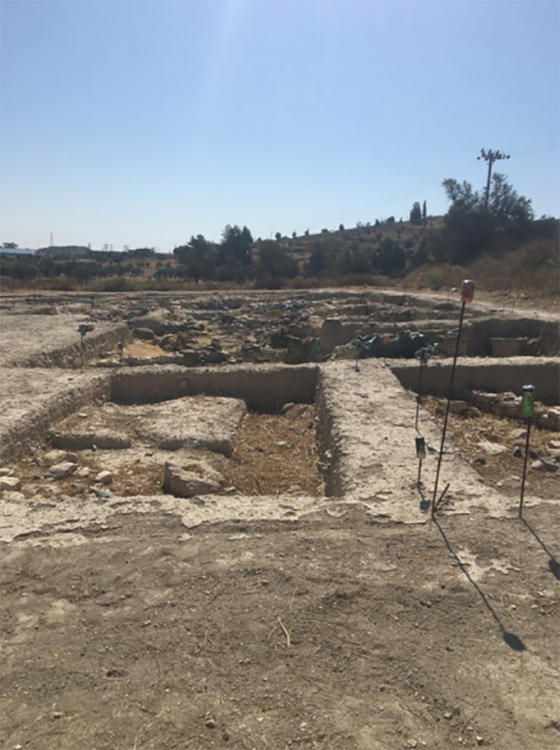
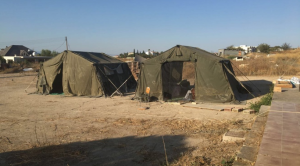


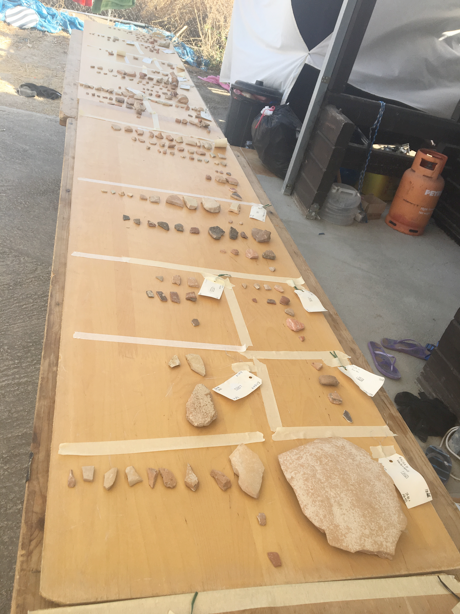
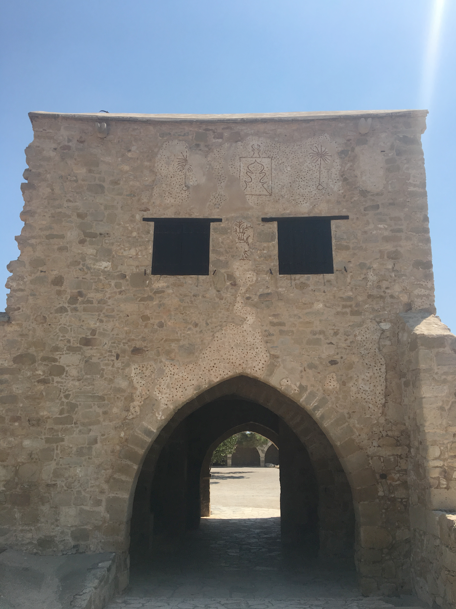
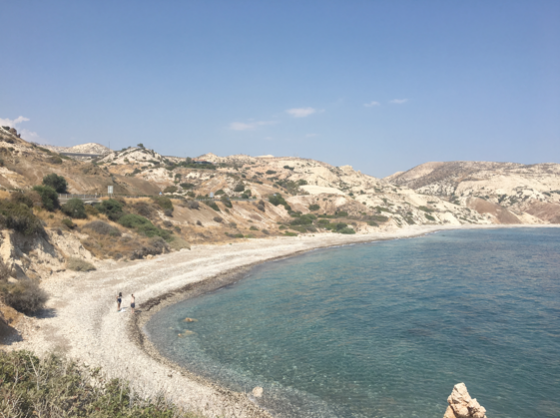
Are you ready to say Hello?
Choose a Pathway
Information will vary based on program level. Select a path to find the information you're looking for!
